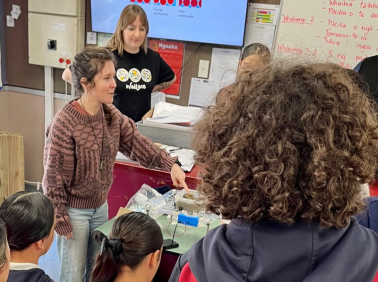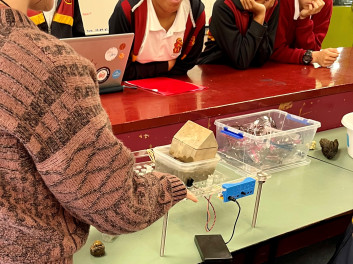Natural hazards education classroom activities trialled at Rotorua school
Year 8 students from Te Kura o Te Koutu in Rotorua have tested a wide range of natural hazard resources and activities, aimed at ensuring the next generation can understand the landscape they live in.
The Toka Tū Ake EQC funded research, led by Dr Marion Tan from Massey University, focuses on the sustainable sharing of resources in natural hazard education and strengthening community resilience.

Head of Research at Toka Tū Ake EQC Dr Natalie Balfour explains that increasing community resilience remains an ongoing priority for Toka Tū Ake, which is why it funds research like this.
“We have an extensive resilience work programme that supports community education and invests significantly in natural hazard research. Toka Tū Ake EQC’s goal is to have a better understanding of the natural hazards in Aotearoa and the ways in which we can reduce their impacts. Our hope is to build resilience among our future generations, and this starts with educating our tamariki.”
Dr Marion Tan says, “We know that schools want to support learning about natural hazards, but they may not know where to go for resources to help them. This research is about considering what would be useful to them, providing a collection of existing programmes and activities, available to teachers in one easy-to-find place. It means that schools can have access to these resources in supplement to external hazards education programmes.
 “We are testing the different activities available to create a wide range of resources for schools to choose from, so they can pick those best suited for their students. We hope that teachers will supplement these resources with their own local knowledge, to provide the context and learning which is most relatable to students. Ultimately, it’s not just about the content that’s provided, the engagement is equally important.”
“We are testing the different activities available to create a wide range of resources for schools to choose from, so they can pick those best suited for their students. We hope that teachers will supplement these resources with their own local knowledge, to provide the context and learning which is most relatable to students. Ultimately, it’s not just about the content that’s provided, the engagement is equally important.”
After trialling the programme, the research team plans to use the feedback to shape the framework that’ll eventually be available to schools and hazards education programmes across Aotearoa New Zealand. “One area of opportunity for development is to make such education resources accessible in te reo Māori.” Dr Tan says.
At Te Kura o Te Koutu the programme was well received. Nineteen students were involved in experiments and demonstrations on geothermal hazards and liquefaction.
Tumu o te Kura Pīrere (head of middle school) Ihipera McLean says, “Their curiosity sparked a great discussion as we bridged geological science concepts to their everyday surroundings. It was a lively session, from relating the experiments to the geothermal activities of Rotorua to unravelling the Tarawera eruption.”
The research is being piloted at three different schools in Rotorua, this being the first, and then two further schools towards the end of the school year.